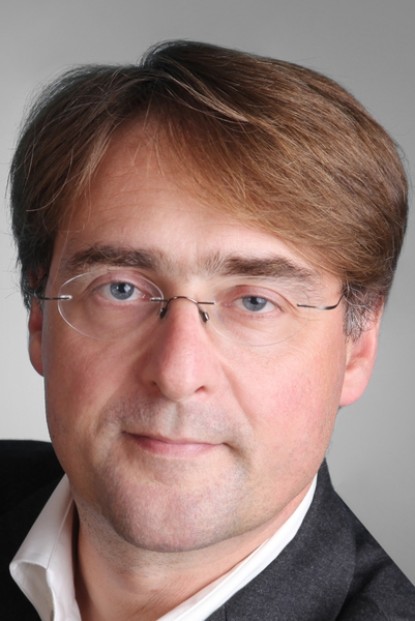A word with: Visiting Professor Dmitry A. Zaitsev
2024/02/06
Until February, our department hosted Prof. Dr. Dmitry A. Zaitsev, a Ukrainian computer scientist who also works at Odessa State Environmental University. Zaitsev has made significant theoretical contributions, particularly in the domains of Linear System Clans, Infinite Petri Nets, and Sleptsov Net Computing. He has researched and developed small Universal Sleptsov/Petri Nets and compositional analysis techniques for Petri Nets.

His professional journey includes positions at Donetsk Polytechnic Institute and Odessa National Academy of Telecommunications. Furthermore, he has engaged in collaborations with various institutions and held visiting positions, maintaining a strong international presence.
Most recently, Zaitsev secured a permanent position at the University of Derby in the UK, having been recognized as an exceptional talent by the Royal Society and granted a UK Global Talent Visa. He began his new position in February 2024.
In a this interview, we explore his scientific journey and insights gained during his stay at the Technical University of Darmstadt:
What ignited your interest in computer science, particularly in the realm of Petri nets, and how did your journey take you from Ukraine to your current position at a German university?
I graduated from the Donetsk Polytechnic Institute in 1986. I was going to become a systems programmer with a diploma thesis that was part of the system software of the first Ukrainian personal computer Neuron – Adjustable Cross-Meta-Assembler within the Neuron-Micro package.
Unexpectedly, I was offered to work as an Assistant Professor, which supposed to double my salary, which forced me to make my decision. This almost accidental event brought me to the field of Petri nets.
I soon fell in love with this field under the supervision of Anatoly Sleptsov – a great Ukrainian computer scientist. About a quarter later, I felt inspired by Ludwik Czaja's memories of a personal meeting with Carl Petri, in which Petri said in a half-serious and half-joking way: „You folks have spoiled my nets, they were so simple“.
I generalised Petri nets and called them Sleptsov nets – following Petri's invitation to introduce new names that will take responsibility for „spoiled nets“. In 2023 an important step was completed with the proof that Sleptsov nets are not only fast but also Turing-complete. ACM Tech News reviewed Sleptsov net computing as a new and promising direction in supercomputing.
My journey has been similar to that of Erasmus of Rotterdam, as we have moved from grant to grant across Europe, visiting Austria, France and Germany. We are grateful to the governments of these countries, to the universities we visited, and to our colleagues for their support.
In 2023 an important step was completed with the proof that Sleptsov nets are not only fast but also Turing-complete.
In your view, what makes Petri and Sleptsov nets a potent tool in computer science?
I would rather say that a Petri net has been the best formalism for modelling concurrent processes in many application domains. Gill started using bipartite graphs to model parallel computation in 1958, before Carl Petri's dissertation in 1962, although Petri's breakthrough in introducing moving tokens is hard to overestimate.
A Petri net occupies a unique position: it is more powerful than a state machine and less powerful than a Turing machine. This allows formal methods to be applied that are not possible from a strictly theoretical point of view for computationally universal systems.
A Sleptsov net can be considered as a uniform graphical language for concurrent programming, because it is Turing complete and runs exponentially faster than a Petri net, especially for arithmetic computations. However, to analyse a Sleptsov net, we sometimes need to consider it as a Petri net in order to apply formal methods.
Now we have everything ready for enterprise implementation of Sleptsov net machine in hardware. Appropriate investment can start the process.
Can you share a standout project or case study that exemplifies the practical applications of Petri nets or Sleptov nets in solving real-world problems?
Professor Tatiana Shmeleva's project „Sleptsov Net Computing for Deep Learning“ has won the EU MSCA4Ukraine award, albeit without funding. It offers ultra-speed for training neural networks, allowing online training in real time. For example, training a self-driving vehicle by observing professionals driving vehicles. This can be planes and other moving objects. Recently the project was supported by Max Planck Institute for Software Systems.
Examples of my papers on Sleptsov net computing consider its application to cyber security with fast encryption-decryption using open key algorithms, linear control, fuzzy control, solving ODE and PDE.
More information on practical applications was presented in a special issue of the International Journal of Parallel, Emergent and Distributed Systems, which I co-edited with David Probert, a prominent figure in the cyber-security field who advised governments on security issues.
A Petri net occupies a unique position: it is more powerful than a state machine and less powerful than a Turing machine.
Throughout your time here, you closely collaborated with Prof. Reiner Hähnle's „Software Engineering“ research group. Could you elaborate on the intersections between your research and theirs?
I was happy to be invited by Prof. Reiner Hähnle to join his group and I enjoyed my research stay within the SE group. During my stay I published three papers with TU Darmstadt affiliation, gave a tutorial and a keynote talk at international conferences, much influenced by the creative friendly atmosphere of the group.
Our common topics concern verification issues, although I focused more on network protocols while Prof. Reiner Hähnle focused on software verification. Our productive discussions open up prospects for joint projects where we could verify concurrent programs by compiling them into Petri nets. We also believe that the SE verification group will find attractive future joint projects for verifying programs drawn in Sleptsov net language.
How does the academic environment and research culture here compare to that of your home institution in Ukraine?
In Germany, a professor has more time for research because he is not overloaded with teaching duties. Similar to Ukraine, in Germany we solve fundamental issues of university life together. I liked attending the faculty meetings, where professors discuss current and strategic issues of the faculty and university life. This procedure facilitates mutual understanding.
Thank you for the interview, we wish you a good start in your new position and hope to continue working with you on future projects.
Thank you.
Keynote talk to ARCI' 2024
“Infinite Petri Nets for Cybersecurity of Intelligent Networks, Grid and Clouds”
https://arci-conference.com/programme-innsbruck-2024.html
Time: Feb 9, 2024 09:00 Madrid
Zoom Meeting ID: 875 9867 1943
Passcode: 9FnpiE
Contact
Dmitry A. Zaitsev
Dr.Sci., Professor
Senior Member of ACM and IEEE
E-mail: daze@acm.org
Website: http://daze.ho.ua




